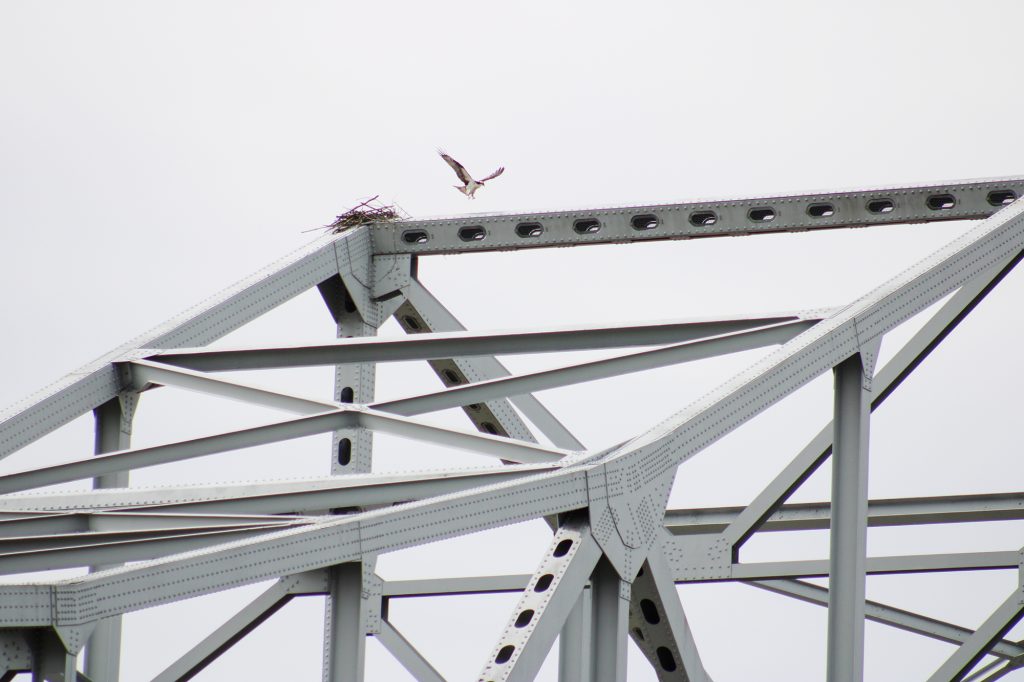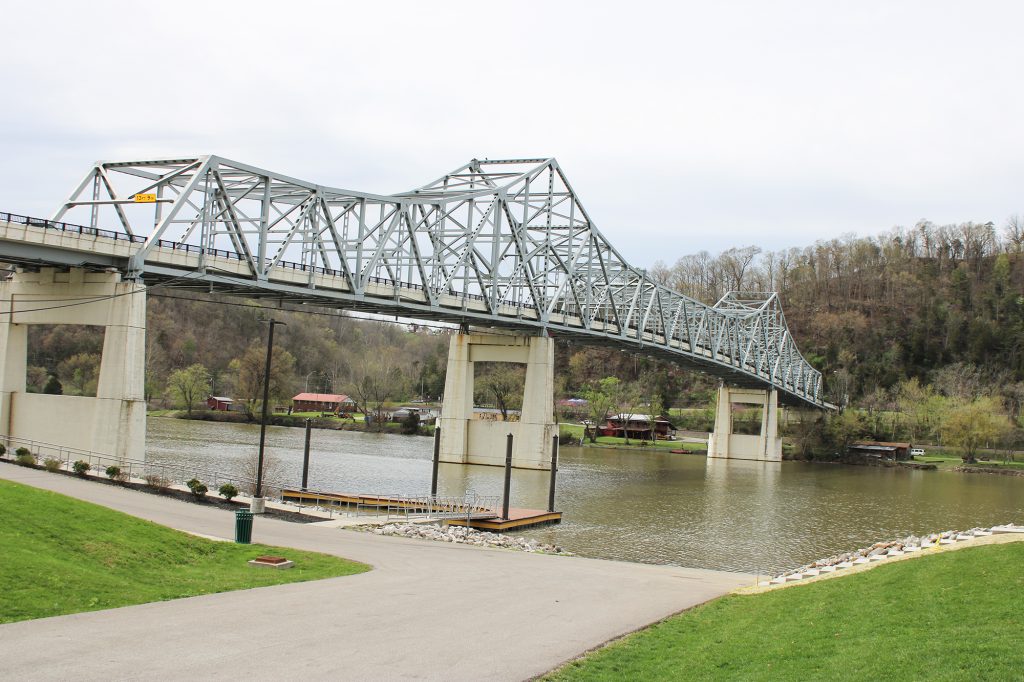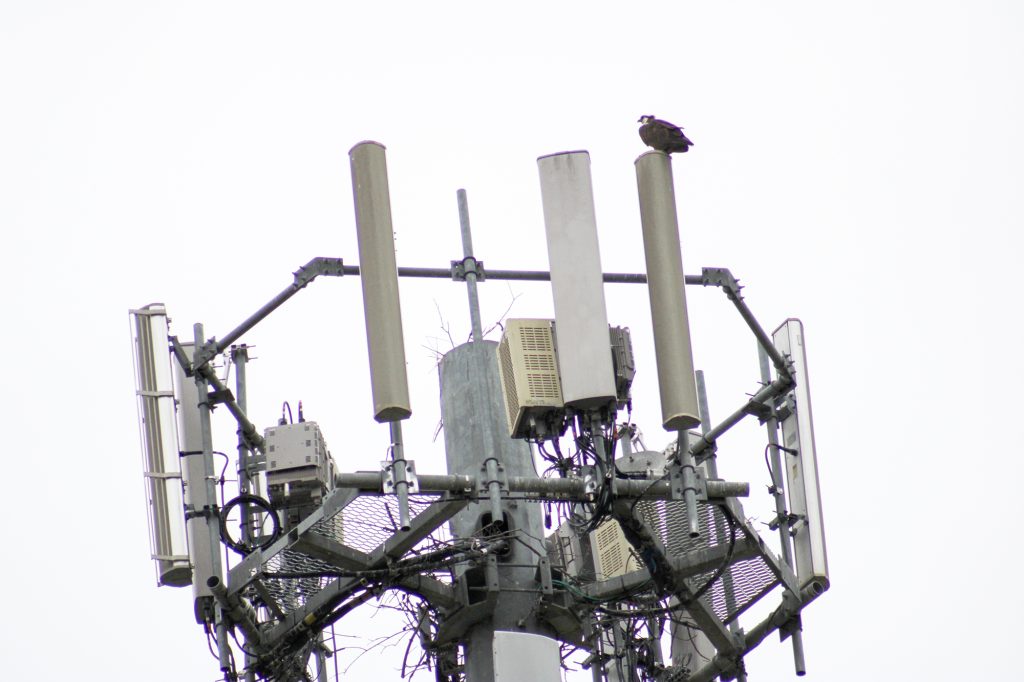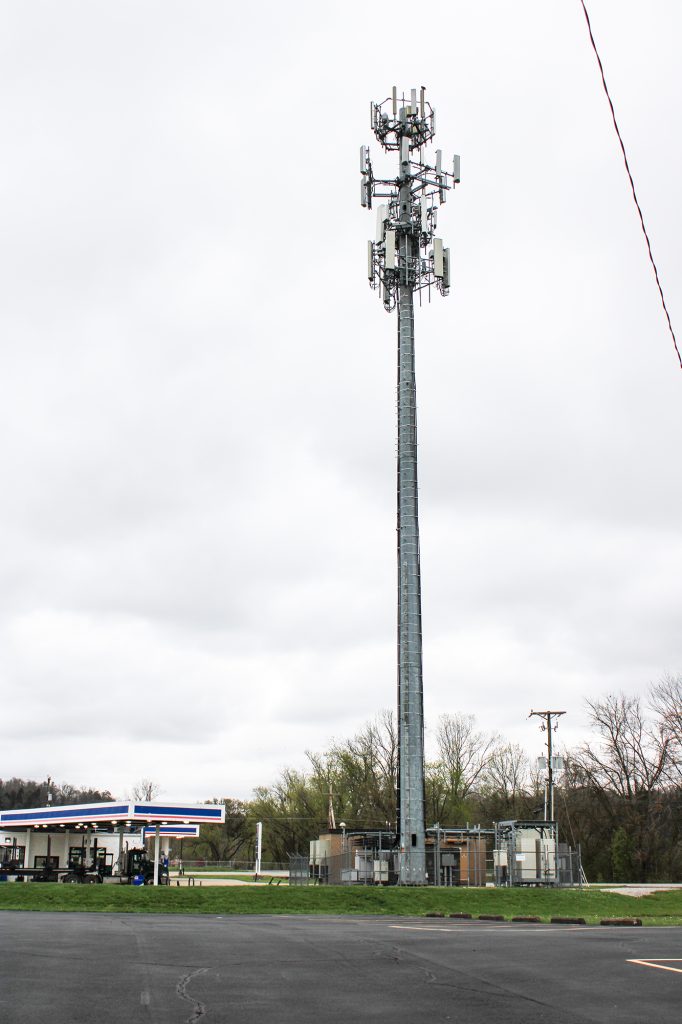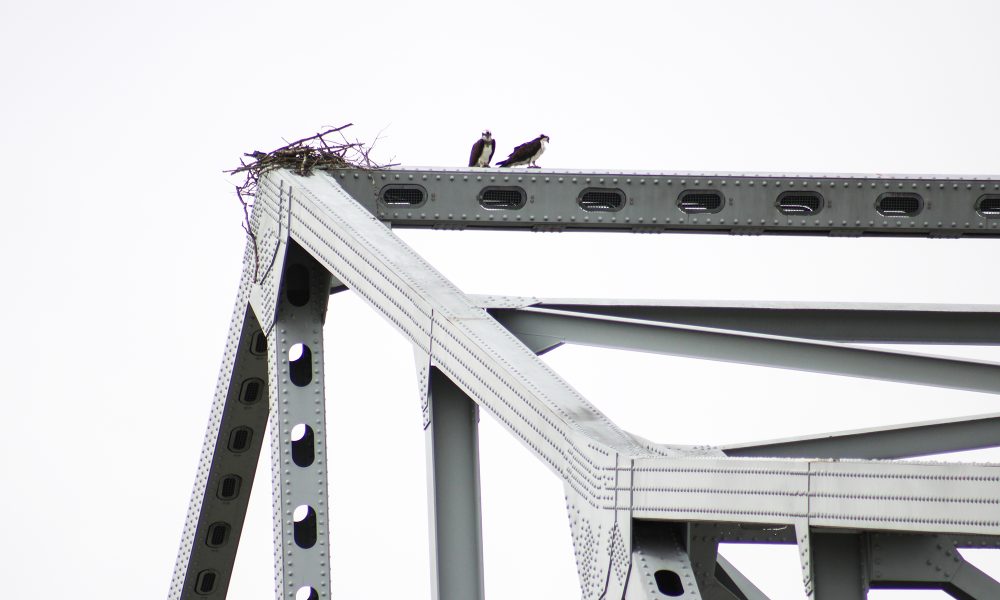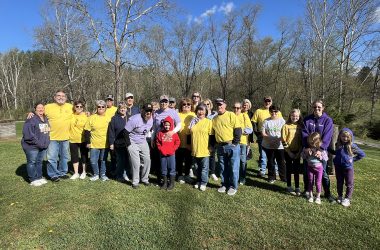This pair of Osprey chose to nest where they could enjoy one of the most scenic views of the Kanawha River.
Once upon a time, a time not so long ago, osprey were unknown to Putnam County and in almost every locale within the bounds of West Virginia. Osprey population in the state dwindled to just six nests in the eastern panhandle due to the use of the pesticide DDT. After its use was banned, the West Virginia Division of Natural Resources partnered with a plant on the Ohio River and osprey population boomed.
Today, there are at least two nests in the county. There is a nest on the cell phone tower in Fraziers Bottom at the junction of Hurricane Creek Road and State Route 817 and a second on the Winfield Bridge. Osprey mate for life and return to the same nest year after year. When their nest is destroyed, as it was by the cell tower operators, they build again.
There is a documentation of a nesting female osprey in a tree which was destroyed by lightning. When the male returned to find his home desolated, he took up his station upon the top of ane uninjured tree close by, and was seen there day after day, month after month, keeping his lonely vigil, apparently mourning the loss of his mate. He remained until late in September, the time that ospreys migrate. He returned to his post the next spring, and continued until autumn, when he joined the company of his fellow ospreys in their journey to the southlands. He did not return for a third summer.
Ospreys are superb fishers and indeed eat little else—fish make up some 99 percent of their diet. They are equipped to catch fish. Their claws are extremely curved and intersect when closed, allowing them firmly grasp the slipperiest of fish. Their outer toes are reversible, which allows them to rotate the toe so they can have two in front, and two in back. Only Ospreys and owls have this unique ability.
Sometimes they confused with bald eagles. Unlike eagles, osprey have white under parts and their heads have a distinctive black eyestripe that goes down the side of their faces.
Osprey do not skim the water surface and grab their prey near the top like an eagle. Ospreys hit the water hard and plunge right in to secure a catch. They have the ability to take off while submerged and with a fish in their talons.
The nest is constructed of sticks and is lined with finer materials. Typically, the female osprey will lay 3 eggs. Osprey pairs are reported to have mated more than 300 times in a single season. Their young hatch at about 38 days, and fledge in 51-54 days.
